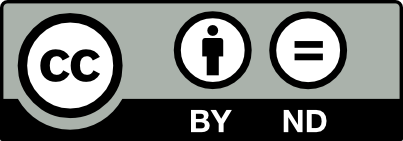- Borrow & Request
- Collections
- Help
- Meet & Study Here
- Tech & Print
- About
A Creative Commons license (CC license) allows you to retain copyright of your work but still allows others to use or share or remix your work (as long as they comply with the license!). CC licenses are an easy way to promote sharing and reusing of materials. As the copyright holder, you can choose to apply a CC license to your work and grant others permission to use it without any fees or costs.
CC Licenses are legally enforceable internationally and cannot be revoked.

A Creative Commons license is made up to several elements. There are four elements that can be combined in different ways to customize a license to suit your needs. Click the right arrow to learn about the 4 elements.

This element indicates that you are letting others copy, remix, distribute, display, and perform you work as long as they give you credit using an appropriate attribution statement. All CC licenses include this element.

This element means that you are letting other copy, distribute, perform, display and modify your work as long as they distribute the modified work under the same license. If they want to distribute the work under a different license, they need to get your permission.

This element means that others can copy, distribute, display, modify, and perform your work expect for commercial purposes. For example, a corporation may use your work for an in-house training but they cannot take your work and profit from it.

This element indicates that others may copy, distribute, display, and perform the work but they cannot make modifications to it. If they want to modify the work, they will need your permission.
Go to the 6 licenses below to learn how you can combine these elements to make up a CC license.

This license is the most open and allows for the widest maximum distribution. It allows other to copy, distribute, remix, modify and build upon you work. They must give you credit for the work (attribution). They can make commercial use of the work.

This license allows others to remix, modify, and otherwise build upon your work for non-commercial uses only and they must attribute the work to you. If they make a derivative of your work, they can do so and use it for commercial purposes. They may license the derivative under different terms.

This license allows other to remix, modify, and otherwise build upon your work as long as they attribute the work to you and they license their modified version under the same license. Any derivatives of a new work can be used for commercial purposes.

This license allows other to remix, modify, and otherwise build upon your work as long as they attribute the work and license any new materials under the same terms. They may not use the modified work for commercial purposes.

This license allows other to redistribute your work and to use it commercially, as long as they attribute it to you and do not modify the work.

This license allows others to redistribute, copy, and use your work as long as they attribute it to you. They may not use the work commercially and the work cannot be modified. This is the most restrictive of the CC licenses.
CC licenses are not "instead of" or "another form of" copyright. CC licenses are copyright licenses and work only where and when copyright applies. When you license a work with a CC license, you still retain the copyright and everything that goes with it, but with a CC license you can let others know how they can use your work without requesting permission. They just have to comply with the terms of the CC license.
 Some works are in the Public Domain. This means either the copyright has expired or the work was not eligible for copyright when it was created (e.g. most government documents). A work in the public domain does not need a CC license.
Some works are in the Public Domain. This means either the copyright has expired or the work was not eligible for copyright when it was created (e.g. most government documents). A work in the public domain does not need a CC license.
 In some cases, people create works and want to share these in the public domain before their copyright would legally expire They can use the CC0 license. Essentially, by adding a CC0 license to your work, you are waiving all rights to it, including attribution. You should use the CC0 license only on your own works.
In some cases, people create works and want to share these in the public domain before their copyright would legally expire They can use the CC0 license. Essentially, by adding a CC0 license to your work, you are waiving all rights to it, including attribution. You should use the CC0 license only on your own works.
Fair Use is an exemption to the copyright law under certain conditions such as teaching and research. When you cite the work of another author in your paper, you are applying the Fair Use exception. Otherwise, you would have to get the author's permission to use their work.
If your use of the work falls under Fair Use, then CC licensing does not apply.
Learn more about Creative Commons and see examples of all the CC licensed resources you could use in your class. It includes educational material, textbooks, photos, music, audio-visual materials, artwork.
 .
.
 This work is licensed under a Creative Commons Attribution NonCommercial 4.0 International License. | Details of our policy
This work is licensed under a Creative Commons Attribution NonCommercial 4.0 International License. | Details of our policy
121 The Valley Library
Corvallis OR 97331–4501
Phone: 541-737-3331